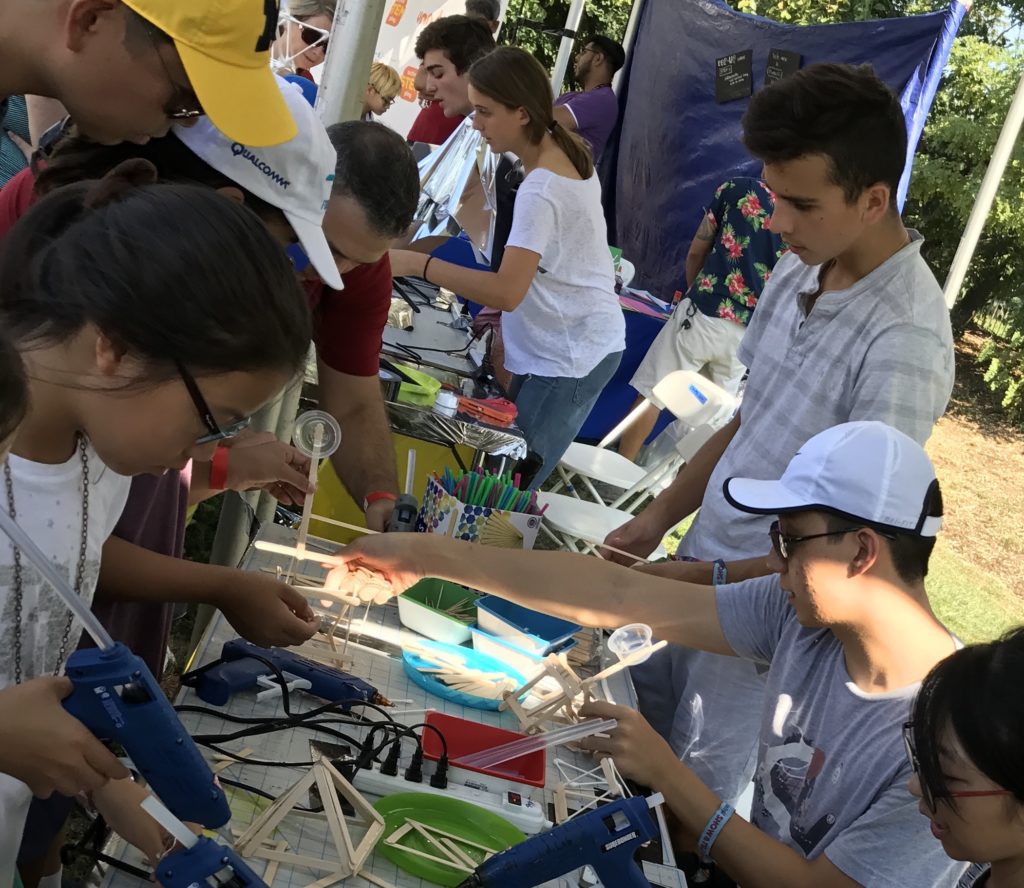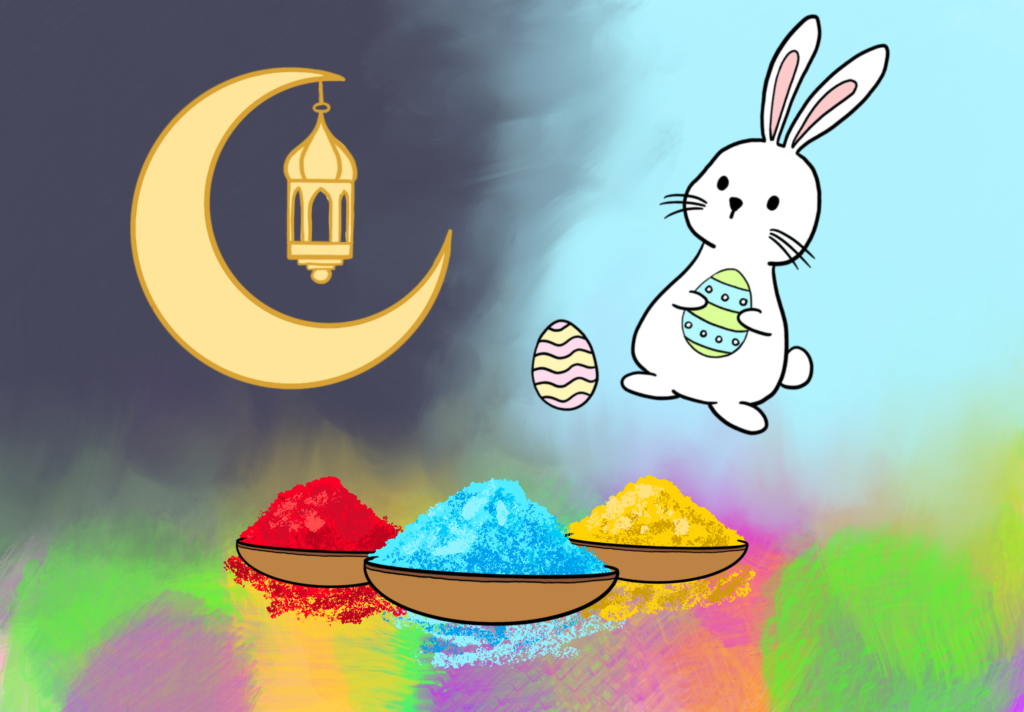
Crowds gather as Sebastian Jimenez ’21, Alan Luo ’18, and alum Sabrina Xie ’17 teach children to make popsicle stick catapults. In the back: Giorgiana McCombe ’19 and Even Karas ’19 make mylar balloons.
Where in the world can you find a light-up prom dress, a bicycle-powered music stage, and a solar-energy chariot drawn by a robot Arnold Schwarzenegger? 20 Choate students found all three this weekend in the same place during the 2017 World Maker Faire at the New York Hall of Science.
“The Maker’s Faire is a gathering of creators, inventors, engineers, and makers who want to share projects with one another and the rest of the world,” said Dr. Travis Feldman, Director of the i.d. Lab. The first Maker’s Faire was in the Bay Area in 2006 as a small festival of creativity. Soon, it began gathering global popularity, so the organizers expanded the event to New York. From there, attendance only increased, with several thousand maker groups and 100,000 to 200,000 visitors at this year’s World Maker Faire.
Annabelle Strong ’19, a Choate attendee, said, “Maker Faire is all about discovery. There are hundreds of booths hosted by groups from hobbyists to startup founders to representatives from tech giants like Google and NASA. Some booths are interactive, some just show off an invention or idea, and some are simply shops looking to sell tools or gadgets to people who visit. And there are a variety of events, too, from drone racing to concerts. People who come just wander around and explore all of the different offerings!”
The types of projects shown at the Maker Faire range “from very humble, handmade, small-scale things to, for instance, the Intel booth that has high tech and cutting-edge items, and everything in between,” said Dr. Feldman. There is also a variety of makers since there is no age requirement for the faire. Participants as young as six have shown their own work.
This year, the Choate Maker Group gave instructions in soft robotics, using Mylar, a thin, shiny polyester-film that is used for its strength, chemical stability, and other physical properties. The Mylar’s edges are binded to make actuators, little elements that move in certain directions. Dr. Feldman explained, “The idea is to introduce the notion of bio inspired robots to people, but without worrying about building the whole robot itself, just focusing on little pieces that move. Our soft robots will do some kind of action that will be activated by someone blowing into a straw. We’re essentially making balloons out of Mylar.”
Another activity the group did was having people arrange geometric polyhedrons using a glue gun and toothpicks. Here, the goal was to have something simple, interactive, and fun that lets Choate students become the teachers in this setting.
Last year, the 25 students involved in the Choate Maker Group gave soldering tutorials to visitors. Soldering is when two metals are fused together using a filler material. The process is used widely in building. However, the purpose of the booth’s tutorial was not to instruct, but rather to create. After showing some basic soldering-procedures, the visitors were given wire, paper clips, and soldering guns to practice their new skills. Some notable pieces Dr. Feldman saw were a wire bicycle, an island scene with a palm tree, and a running stick figure.
Over the years, Dr. Feldman and Choate students have seen an array of projects. One booth had designed a hydraulics-powered robot-claw, where a lucky volunteer donned a glove that connected to the robot. The robot-claw’s actions mirrored the person’s hand movements and allowed the volunteer to pick up a car and crush it using their fingers. There was also a popular project where a maker had taken a typical fishing car with hooks and bait on the roof, and attached animatronic fish and lobsters on the car’s surface. An orchestral piece played internally, and the marine life was conducted by one lobster with a baton.
But what makes Maker Faire stand out from most science fairs and conventions is that it celebrates people’s work without any pressure to market a product. Generally, Dr. Feldman said, “the makers are people who simply desire to share their ideas, and therefore don’t take their projects so seriously that they won’t allow mistakes to be a part of their final presentation.” Even though the overarching theme of the faire is the concept of STEAM, (Science, Technology, Engineering, Art, and Math) people participating are there to have fun and to experiment. It is an open forum with minimal requirements and no criteria: “The overall community is there to appreciate one another’s projects, not to judge and exclude. It’s a very inclusive environment,” added Dr. Feldman. “People who think it’s about science are missing out. That’s a crucial part of the culture, but the biggest part is the creativity and enthusiasm.”


